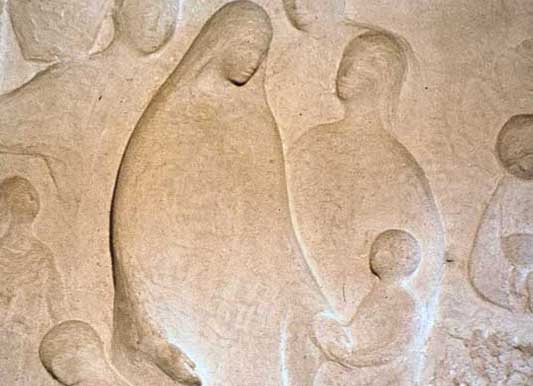
Giordani. “This is Mary’s Hour.”
 “When it comes to Mary the universal Church bursts into song. In midst of greyness and boredom, her name appears, the atmosphere clears and endless lights are lit. She is the sun in which God placed his dwelling.” This is how Giordani writes of the Mother of God, singing along with the Church as he places himself amongst the many artists, theologians and holy people who have competed in portraying the virtues of the Virgin Mary: her beauty, the greatness of her role in the economy of the Salvation. His book, Maria modello perfetto, (Città Nuova, Rome, 2012) marks the conclusion of a journey: the progression of Giordani’s understanding of the mystery of Mary and of his attitude towards her. He had often written of her in articles and in the many pages of his books. He had already dedicated a previous book to her in 1944: Maria di Nazareth. But up to then, the theme was always contemplation, praise and invocation. In Maria modello perfetto there is a difference, which reveals the maturation accomplished in Giordani. There is the same contemplation, but above all imitation of Mary. The intellectual and life relationship of Giordani with the Mother of Jesus enters into a deeper dimension following his encounter with Chiara Lubich, in 1948, and with the Movement that was begun by her, popularly known as the Focolare Movement, but whose real name is Work of Mary. Right from the start, the experience of Chiara Lubich and of those who had entered into communion with her centred on the Word, especially Jesus’s prayer for unity: that spirituality had a strong “Marian stamp” that became clearer and developed further through successive stages. Some of these included: total willingness to germinate the presence of Mary in one’s personal and communitarian spiritual life; to repeat inasmuch as that is possible, the life of Mary, following her path – the Via Mariae (the Way of Mary) – as it emerges from the Gospel and Tradition; and a very distinctive choice of her as one’s Mother. This reality is what lies behind Giordani’s discourse on Mary. He offers it enriched by his cultural, theological and literary background, and with that characteristic zeal that made him a singular and enthusiastic witness of love towards the Mother of God. “Mary incarnates strength because she incarnates love: and love is stronger than death. Only in this does the desperation of the world melt away as new life is given, on this Calvary where we are all assembled by universal guilt (. . .) Poetry, science, wisdom and love become condensed in Mary, who is the refuge in desolation, loadstar in the storm and beauty in the horror. She marks out the way that leads to the Son, so that, through her, He comes more lovingly to us. We’re never alone: the Mother is there. We only need to enkindle her name in the desert night. (. . .) Every saint, every attentive Christian, is on a cross like Christ, but with the Mother beside him. In the most horrendous moment, he sees her imploring eyes, feels the unity with her, and trustingly places his soul in the hands of the Father.” The “Imitation of Mary” is presented as a valid goal for women and men, for consecrated virgins, priests and lay people, and it can have social as well as spiritual applications. “This is Mary’s hour,” Giordani writes, this hour when she wishes to live again in souls that mystically “become” her and are able to generate Jesus again in the midst of today’s people who are more and more in need of Him. Giordani sees her especially in the abysmal depths of her Desolation where she becomes the Mother of the Redeemed, the soul of those who know how to welcome her in. He sees her beginning to appear as a viable path of holiness for each one of us. Tommaso Sorgi www.iginogiordani.info
“When it comes to Mary the universal Church bursts into song. In midst of greyness and boredom, her name appears, the atmosphere clears and endless lights are lit. She is the sun in which God placed his dwelling.” This is how Giordani writes of the Mother of God, singing along with the Church as he places himself amongst the many artists, theologians and holy people who have competed in portraying the virtues of the Virgin Mary: her beauty, the greatness of her role in the economy of the Salvation. His book, Maria modello perfetto, (Città Nuova, Rome, 2012) marks the conclusion of a journey: the progression of Giordani’s understanding of the mystery of Mary and of his attitude towards her. He had often written of her in articles and in the many pages of his books. He had already dedicated a previous book to her in 1944: Maria di Nazareth. But up to then, the theme was always contemplation, praise and invocation. In Maria modello perfetto there is a difference, which reveals the maturation accomplished in Giordani. There is the same contemplation, but above all imitation of Mary. The intellectual and life relationship of Giordani with the Mother of Jesus enters into a deeper dimension following his encounter with Chiara Lubich, in 1948, and with the Movement that was begun by her, popularly known as the Focolare Movement, but whose real name is Work of Mary. Right from the start, the experience of Chiara Lubich and of those who had entered into communion with her centred on the Word, especially Jesus’s prayer for unity: that spirituality had a strong “Marian stamp” that became clearer and developed further through successive stages. Some of these included: total willingness to germinate the presence of Mary in one’s personal and communitarian spiritual life; to repeat inasmuch as that is possible, the life of Mary, following her path – the Via Mariae (the Way of Mary) – as it emerges from the Gospel and Tradition; and a very distinctive choice of her as one’s Mother. This reality is what lies behind Giordani’s discourse on Mary. He offers it enriched by his cultural, theological and literary background, and with that characteristic zeal that made him a singular and enthusiastic witness of love towards the Mother of God. “Mary incarnates strength because she incarnates love: and love is stronger than death. Only in this does the desperation of the world melt away as new life is given, on this Calvary where we are all assembled by universal guilt (. . .) Poetry, science, wisdom and love become condensed in Mary, who is the refuge in desolation, loadstar in the storm and beauty in the horror. She marks out the way that leads to the Son, so that, through her, He comes more lovingly to us. We’re never alone: the Mother is there. We only need to enkindle her name in the desert night. (. . .) Every saint, every attentive Christian, is on a cross like Christ, but with the Mother beside him. In the most horrendous moment, he sees her imploring eyes, feels the unity with her, and trustingly places his soul in the hands of the Father.” The “Imitation of Mary” is presented as a valid goal for women and men, for consecrated virgins, priests and lay people, and it can have social as well as spiritual applications. “This is Mary’s hour,” Giordani writes, this hour when she wishes to live again in souls that mystically “become” her and are able to generate Jesus again in the midst of today’s people who are more and more in need of Him. Giordani sees her especially in the abysmal depths of her Desolation where she becomes the Mother of the Redeemed, the soul of those who know how to welcome her in. He sees her beginning to appear as a viable path of holiness for each one of us. Tommaso Sorgi www.iginogiordani.info
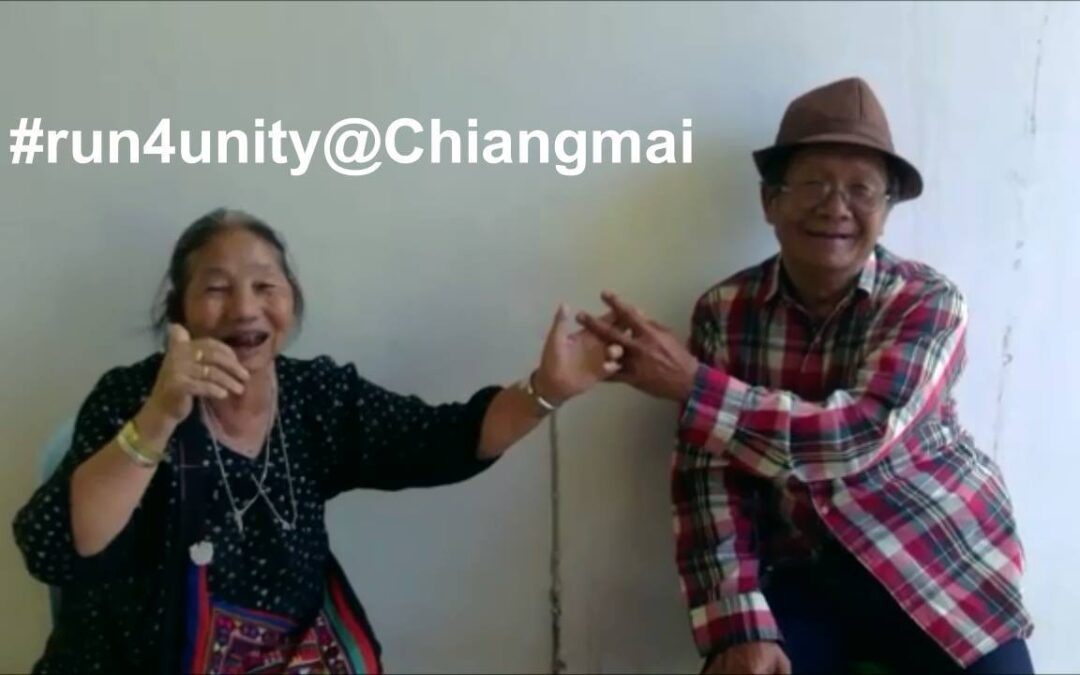
United World Week and Run4Unity 2015
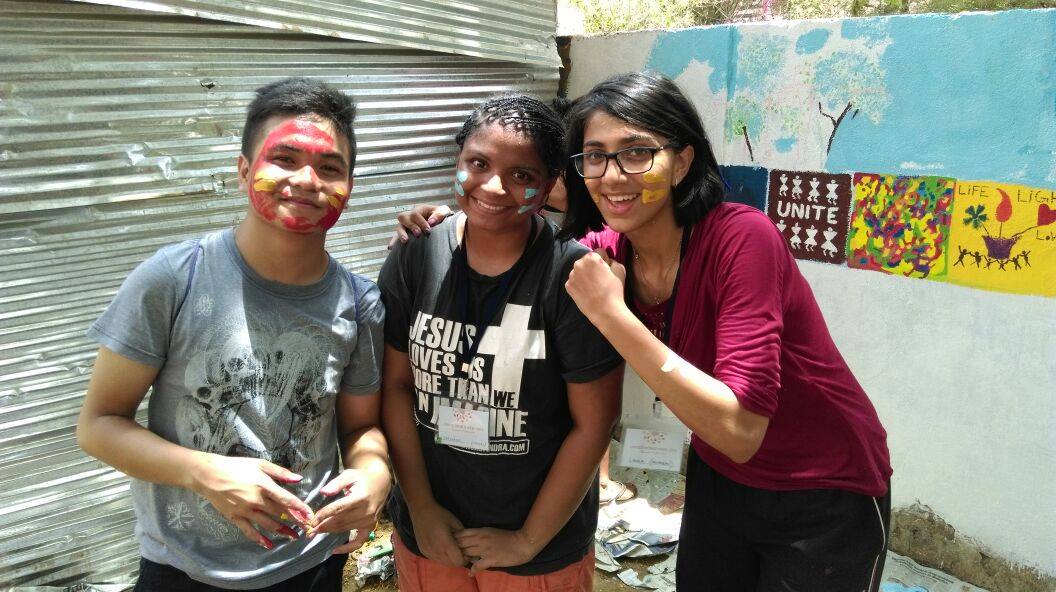 Focolare Youth and children and their many friends. Signs of persistent commitment towards peace in the whole world. A focus on some initiatives, not amongst the most crowded or those held in well-known cities, but very significant because they show that everyone, anywhere can contribute towards peace. Kinshasa, Congo. A convinced crowd of a thousand young people, Christians and Muslims demonstrated in front of civil authorities: mayors, governor, members of parliament, ambassadors. (One boy managed to invite 70 friends who took part in the activity and paid their participation fee in advance). These youngsters marched for about an hour in the chaotic city of Kinshasa until they reached Petite Flamme, the school run by the Focolare Movement and found in Ndolo. This project offers many teens the opportunity to build a future in their own country without having to emigrate. Other young people marched in the unstable east region of Bukavu, Kikwit and Goma. Damascus, Syria. Syrian children have been asked to comment on their situation and answered through social networks: “I am M., and after managing to escape from home I now live in Damascus. During the night our neighbourhood was very heavily bombarded and rockets hit some of our friends’ homes. The Focolare families did their best to find accommodation for them….Some of us lost relatives, friends, school…. But in spite of all this we believe in peace, we live for peace and pray God for peace. We visited children in an orphanage. We organized ourselves and prepared for them sweets, salted biscuits, bracelets….. We played with these children and spent a very nice day together”. Another group of 65 youngsters, coming from different parts of the country, faced the risk of a journey to spend a couple of days together: “It seemed an oasis as it was for the people of Israel who for 40 years journeyed in the desert amidst many hardships”.
Focolare Youth and children and their many friends. Signs of persistent commitment towards peace in the whole world. A focus on some initiatives, not amongst the most crowded or those held in well-known cities, but very significant because they show that everyone, anywhere can contribute towards peace. Kinshasa, Congo. A convinced crowd of a thousand young people, Christians and Muslims demonstrated in front of civil authorities: mayors, governor, members of parliament, ambassadors. (One boy managed to invite 70 friends who took part in the activity and paid their participation fee in advance). These youngsters marched for about an hour in the chaotic city of Kinshasa until they reached Petite Flamme, the school run by the Focolare Movement and found in Ndolo. This project offers many teens the opportunity to build a future in their own country without having to emigrate. Other young people marched in the unstable east region of Bukavu, Kikwit and Goma. Damascus, Syria. Syrian children have been asked to comment on their situation and answered through social networks: “I am M., and after managing to escape from home I now live in Damascus. During the night our neighbourhood was very heavily bombarded and rockets hit some of our friends’ homes. The Focolare families did their best to find accommodation for them….Some of us lost relatives, friends, school…. But in spite of all this we believe in peace, we live for peace and pray God for peace. We visited children in an orphanage. We organized ourselves and prepared for them sweets, salted biscuits, bracelets….. We played with these children and spent a very nice day together”. Another group of 65 youngsters, coming from different parts of the country, faced the risk of a journey to spend a couple of days together: “It seemed an oasis as it was for the people of Israel who for 40 years journeyed in the desert amidst many hardships”. 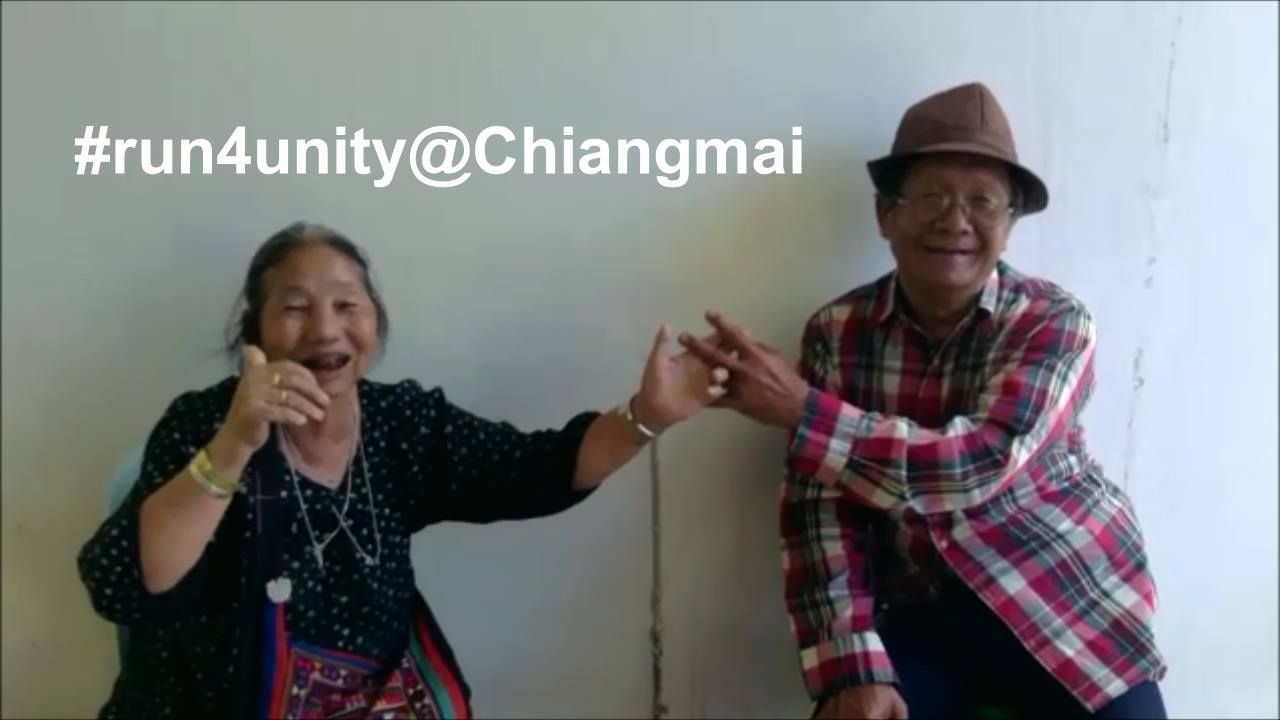 Cascais, Portugal. 900 young Portuguese gathered at the small town of Cascais welcomed the Syrian youth’s commitment to pray and be points of reference for peace in everyday life so as to spread love and peace around them. “They instilled strength and determination in us, helping us to give relative importance to our small difficulties and challenges”. The commissioner for youth policies encouraged them saying: “Continue to believe in what already believe. Continue to be what you are. The world needs you!” Bahía Blanca, Argentina. Through the initiative “Papelitos in the city”, positive messages were scattered everywhere: on school benches, doors, in elevators, in mailboxes, on motorcycles, cars, bicycles…. The golden rule found in sacred books and in other texts stimulated the idea: “Cheer up everybody’s day and contribute to lessen violence”. Other groups (scouts, etc.) took part in this initiative through Whatsapp and Facebook. It has also aroused conflicting ideas that reinforced the youth’s determination to “write those words with their lives”. Hamm, Germany. Catholic and Evangelical youth walked together through the city and stopped at various places of worship, including a mosque and Hindu temple. Slovakia. Slovak and Ukrainian youth and children met at a town on the border between the two countries and organized different activities. Above all, they shared the suffering of a conflict that continues to cause death and destruction. Hong Kong And Macao: The necessity of peace and its absolute priority were promoted in one of the most busy commercial places in Hong Kong, which youth chose as their meeting place. Bethlehem. Christian and Muslim children from Jerusalem, Nazareth and Haifa, who took part in this year’s edition of the relay race for peace, met at the Square of the Basilica of the Nativity in Bethlehem. From there they walked to the Salesian monastery in the Cremisan Valley, where the local people protested without any violence and prevented the building of a part of the wall that separates Israel and the Palestinian Territories. Source:Press releases
Cascais, Portugal. 900 young Portuguese gathered at the small town of Cascais welcomed the Syrian youth’s commitment to pray and be points of reference for peace in everyday life so as to spread love and peace around them. “They instilled strength and determination in us, helping us to give relative importance to our small difficulties and challenges”. The commissioner for youth policies encouraged them saying: “Continue to believe in what already believe. Continue to be what you are. The world needs you!” Bahía Blanca, Argentina. Through the initiative “Papelitos in the city”, positive messages were scattered everywhere: on school benches, doors, in elevators, in mailboxes, on motorcycles, cars, bicycles…. The golden rule found in sacred books and in other texts stimulated the idea: “Cheer up everybody’s day and contribute to lessen violence”. Other groups (scouts, etc.) took part in this initiative through Whatsapp and Facebook. It has also aroused conflicting ideas that reinforced the youth’s determination to “write those words with their lives”. Hamm, Germany. Catholic and Evangelical youth walked together through the city and stopped at various places of worship, including a mosque and Hindu temple. Slovakia. Slovak and Ukrainian youth and children met at a town on the border between the two countries and organized different activities. Above all, they shared the suffering of a conflict that continues to cause death and destruction. Hong Kong And Macao: The necessity of peace and its absolute priority were promoted in one of the most busy commercial places in Hong Kong, which youth chose as their meeting place. Bethlehem. Christian and Muslim children from Jerusalem, Nazareth and Haifa, who took part in this year’s edition of the relay race for peace, met at the Square of the Basilica of the Nativity in Bethlehem. From there they walked to the Salesian monastery in the Cremisan Valley, where the local people protested without any violence and prevented the building of a part of the wall that separates Israel and the Palestinian Territories. Source:Press releases
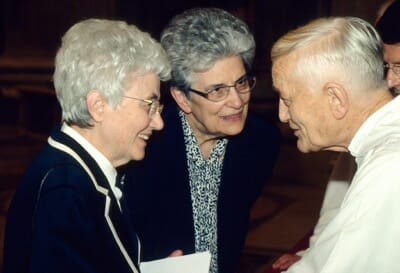
Centennial of Brother Roger Schutz

Chiara Lubich, Gabri Fallacara, Frère Roger Schutz (1978).

Chiara Lubich, Eli Folonari,
Stories in times of economic crisis
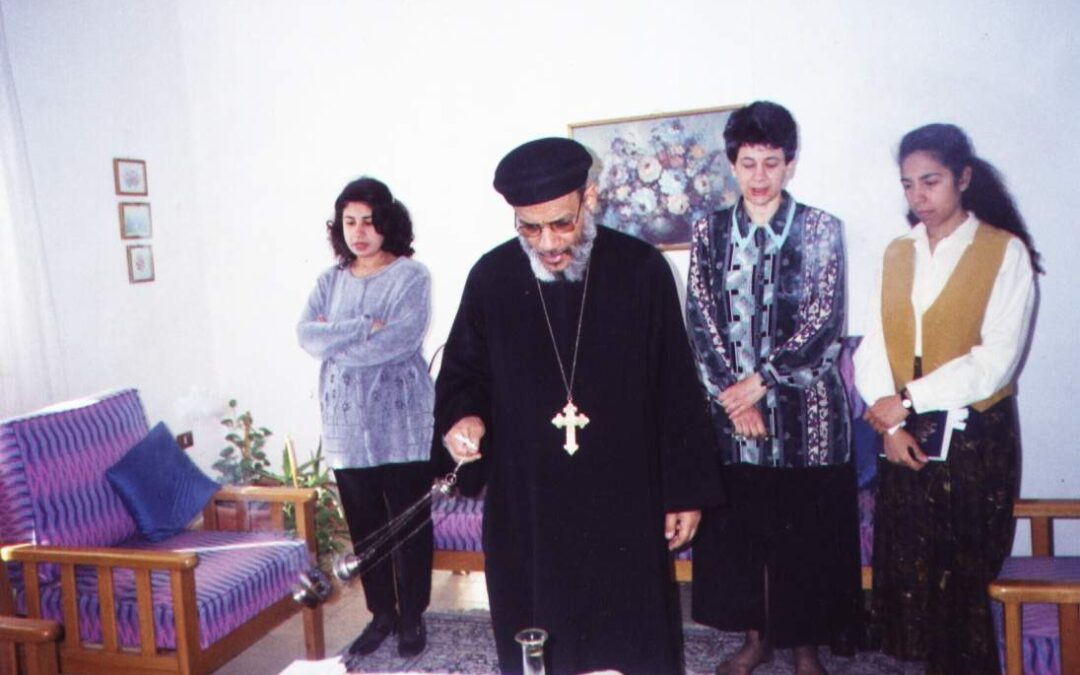
A day of friendship between Copts and Catholics
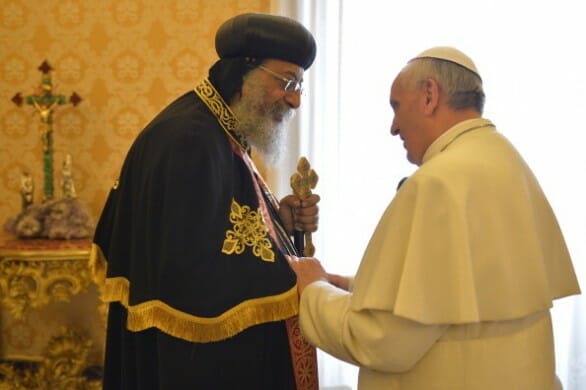 May 10, 2013. Pope Francis and Pope Tawadros II meet at the Vatican to remember the historic appointment that took place 40 years ealier between their predecessors, Pope Paul VI and Pope Shenouda III, and their Common Declaration on the one faith that is professed by churches with different traditions. During his remarks, Pope Francis stated: “I am convinced that – under the guidance of the Holy Spirit – our persevering prayer, our dialogue and the will to build communion day by day in mutual love will allow us to take important further steps towards full unity.” During an interview Pope Tawadros II stated: “I believe in the diversity in unity. Being in a garden where all the flowers are red and of the same hight, is boring. But being in a garden where I see a pink rose, a yellow rose and a white rose; and I see trees of different heights – this diversity expresses beauty and strength. When I am sitting with you I am rich of my brothers and sisters in Christ.” Coptic focolarina, Sherin, offers her thoughts: “These are words spoken by someone who has the courage to love his brothers and sisters, to shorten the distance and time in favour of understanding and renewed sharing after years of distance, enabling the two Churches to take up a path of peace and brotherhood. It will not be possible to erase these words from memory nor from the history of ecumenism until the churches rejoice on the day of the full unity of thier children.” The 2013 visit of Pope Tawadros II had been the first, following his election. Perhaps he wished to pay a visit to the Successor of Peter, Pope Francis. It was the second historic visit of a Coptic Pope to the Pope of Rome, that helped to lessen the distance between the two Churches.
May 10, 2013. Pope Francis and Pope Tawadros II meet at the Vatican to remember the historic appointment that took place 40 years ealier between their predecessors, Pope Paul VI and Pope Shenouda III, and their Common Declaration on the one faith that is professed by churches with different traditions. During his remarks, Pope Francis stated: “I am convinced that – under the guidance of the Holy Spirit – our persevering prayer, our dialogue and the will to build communion day by day in mutual love will allow us to take important further steps towards full unity.” During an interview Pope Tawadros II stated: “I believe in the diversity in unity. Being in a garden where all the flowers are red and of the same hight, is boring. But being in a garden where I see a pink rose, a yellow rose and a white rose; and I see trees of different heights – this diversity expresses beauty and strength. When I am sitting with you I am rich of my brothers and sisters in Christ.” Coptic focolarina, Sherin, offers her thoughts: “These are words spoken by someone who has the courage to love his brothers and sisters, to shorten the distance and time in favour of understanding and renewed sharing after years of distance, enabling the two Churches to take up a path of peace and brotherhood. It will not be possible to erase these words from memory nor from the history of ecumenism until the churches rejoice on the day of the full unity of thier children.” The 2013 visit of Pope Tawadros II had been the first, following his election. Perhaps he wished to pay a visit to the Successor of Peter, Pope Francis. It was the second historic visit of a Coptic Pope to the Pope of Rome, that helped to lessen the distance between the two Churches. 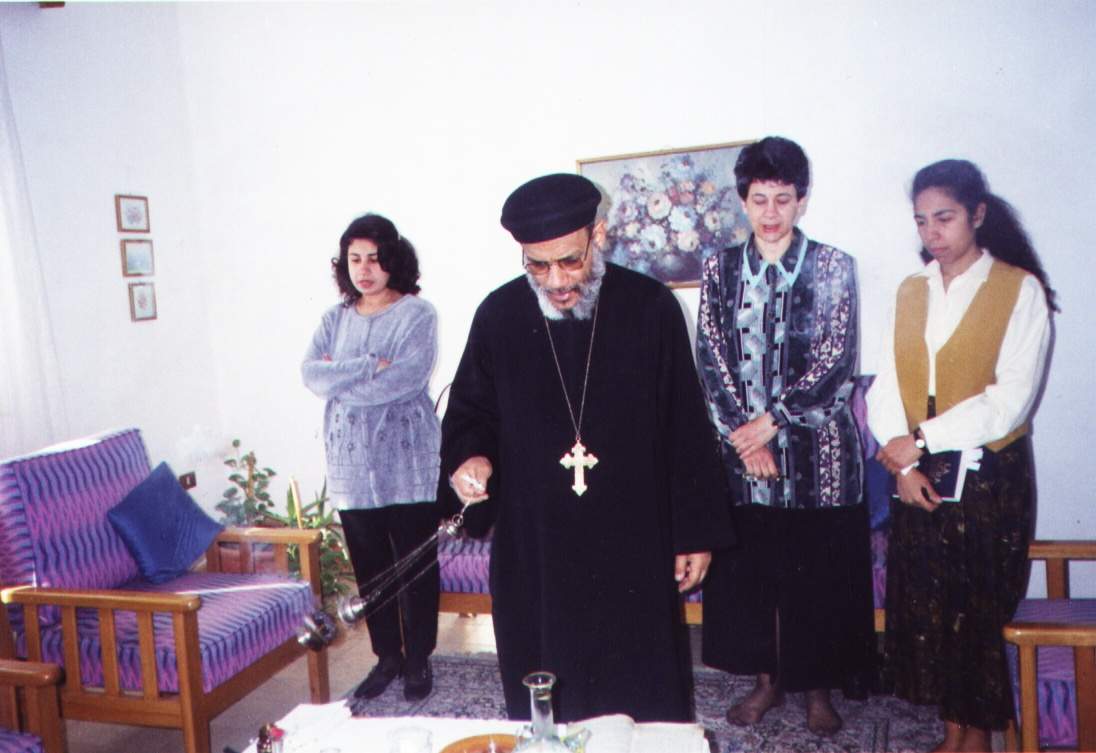 “That encounter between those two great men of God is still alive in my memory as, under the guidance of the Holy Spirit, they continue to conduct their flock towards the one Church that will come in God’s time. The memory of their fraternal embrace and the mutual love that could be visibly seen between them fills me with immense joy. I join my sisters and brothers of both Churches in celebrating this occasion, and with enthusiasm I look towards the near future, confident in the steps that will draw us closer and closer. This is a cause of great rejoicing for the entire Church! It encourages me to live for unity even more, a possibility that had fascinated me years ago when I met the Focolare Movement where I discovered the ‘precious pearl’ of the Gospel, for which you sell everything you have. I share this life in focolare with sisters from various Churches, and this is where I experience the joy of the Risen One, a sign of what the Church will be in its full unity. Each day we pray, work, share moments of suffering as Pope Francis said when he spoke about the ecumenism of suffering, and it makes us grow in love and mutual respect, believing that on the Cross, Jesus has overcome all our divisions and filled every void. I am grateful for the many people across the world with whom I share this experience. We live and pray for this unity, that it might be experienced and lived by everyone.” Sherin, focolare, Sohag, Egypt
“That encounter between those two great men of God is still alive in my memory as, under the guidance of the Holy Spirit, they continue to conduct their flock towards the one Church that will come in God’s time. The memory of their fraternal embrace and the mutual love that could be visibly seen between them fills me with immense joy. I join my sisters and brothers of both Churches in celebrating this occasion, and with enthusiasm I look towards the near future, confident in the steps that will draw us closer and closer. This is a cause of great rejoicing for the entire Church! It encourages me to live for unity even more, a possibility that had fascinated me years ago when I met the Focolare Movement where I discovered the ‘precious pearl’ of the Gospel, for which you sell everything you have. I share this life in focolare with sisters from various Churches, and this is where I experience the joy of the Risen One, a sign of what the Church will be in its full unity. Each day we pray, work, share moments of suffering as Pope Francis said when he spoke about the ecumenism of suffering, and it makes us grow in love and mutual respect, believing that on the Cross, Jesus has overcome all our divisions and filled every void. I am grateful for the many people across the world with whom I share this experience. We live and pray for this unity, that it might be experienced and lived by everyone.” Sherin, focolare, Sohag, Egypt
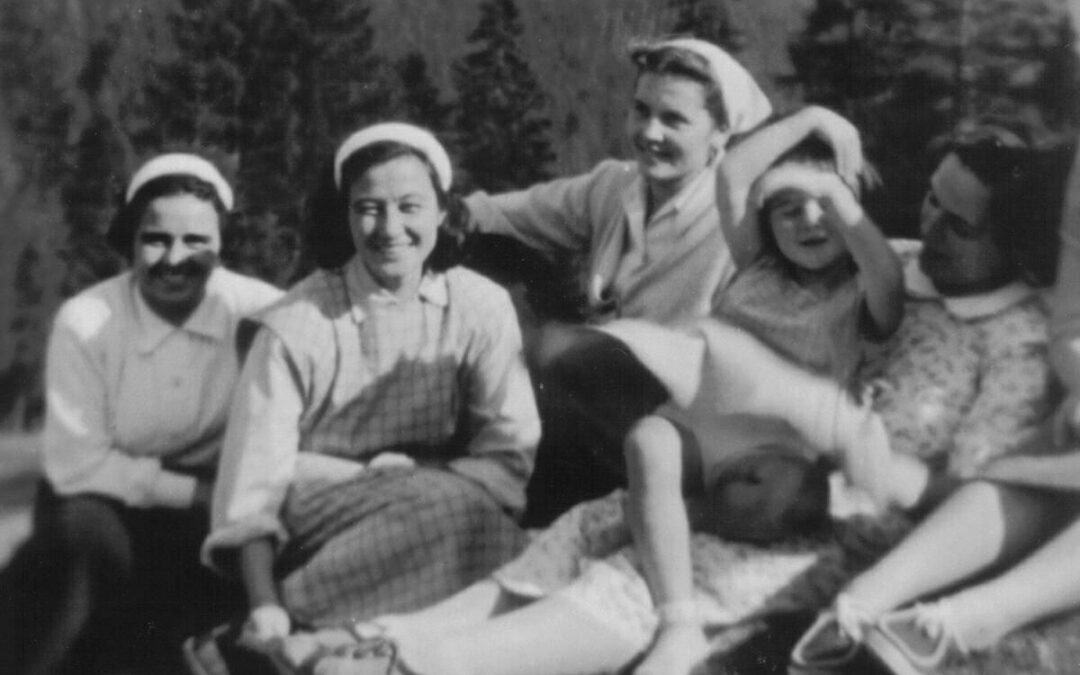
Graziella De Luca left this world
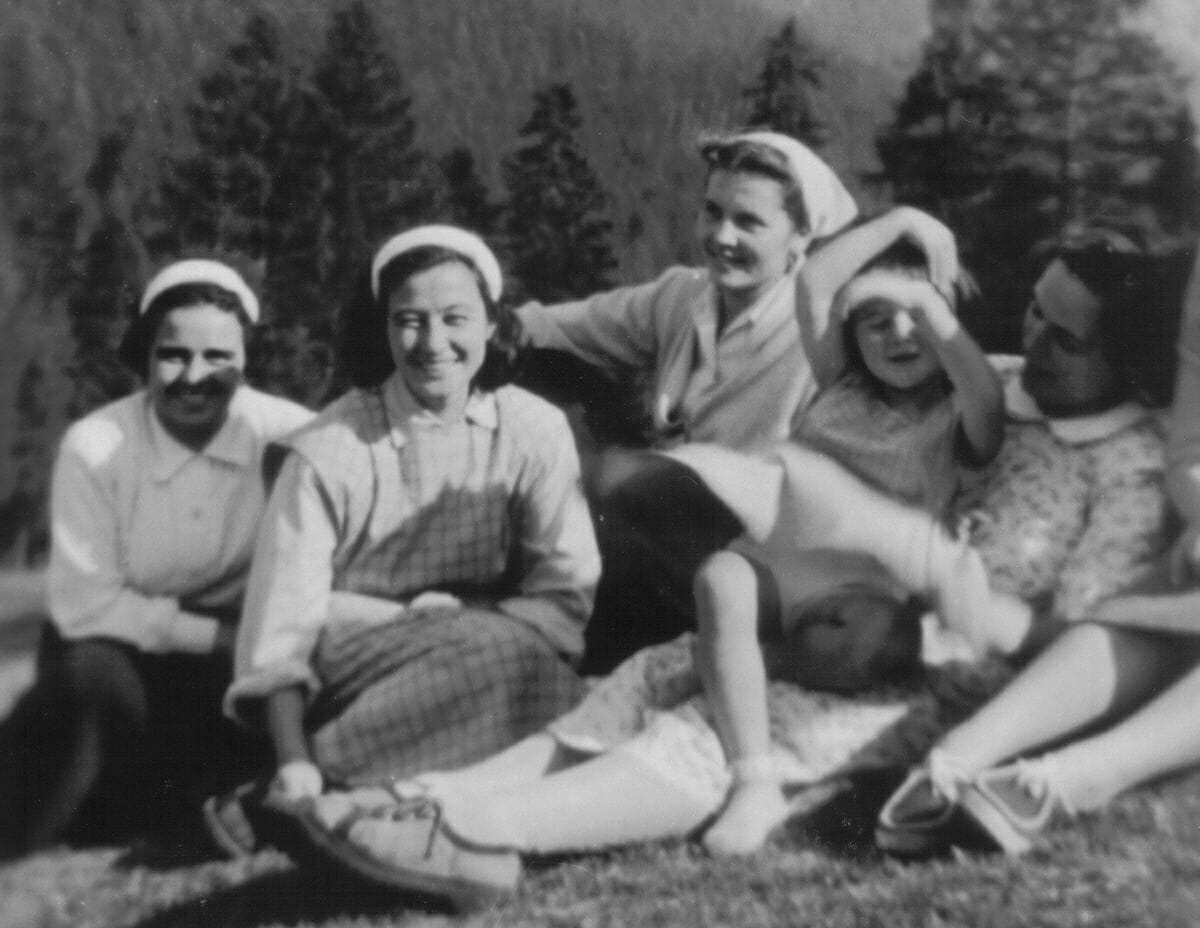 “The adventure of unity:” this is how Chiara Lubich and her first companions were fond of describing their choice of God as the Ideal that led them to live for the unity of the human family. Graziella De Luca was with Chiara right from the start of the Focolare Movement. It would be impossible to describe in few words the very fruitful life she lived in spreading the spirituality of unity in many so many places and hearts. “I have come to set the world on fire, and I wish it were already burning! (Lk 12:49). Chiara had suggested this Gospel sentence to her as a goal, also because of her keen apostolic spirit that led her in great simplicity to share with parliamentarians and simple workers, the great discovery that changed her life, the encounter with God’s love. Born in Trent, Italy, on March 12, 1925, Graziella De Luca died on May 9, 2015 at 15:35, as the focolarine gathered around her were praying the Veni Creator Spiritus, writes Focolare president, Maria Voce informing the global community of Graziella’s death. She continued: “Let us thank God for her abundantly fruitful life. Let us pray for her, in the joy of imagining her already in the Bosom of the Father, with Our Lady and all those who are dear to us. Let us trustfully entrust the Work of Mary to her as it “reaches out,” certain that she will help us to set the world on fire with love”. Live streaming of the funeral: live.focolare.org/graziella
“The adventure of unity:” this is how Chiara Lubich and her first companions were fond of describing their choice of God as the Ideal that led them to live for the unity of the human family. Graziella De Luca was with Chiara right from the start of the Focolare Movement. It would be impossible to describe in few words the very fruitful life she lived in spreading the spirituality of unity in many so many places and hearts. “I have come to set the world on fire, and I wish it were already burning! (Lk 12:49). Chiara had suggested this Gospel sentence to her as a goal, also because of her keen apostolic spirit that led her in great simplicity to share with parliamentarians and simple workers, the great discovery that changed her life, the encounter with God’s love. Born in Trent, Italy, on March 12, 1925, Graziella De Luca died on May 9, 2015 at 15:35, as the focolarine gathered around her were praying the Veni Creator Spiritus, writes Focolare president, Maria Voce informing the global community of Graziella’s death. She continued: “Let us thank God for her abundantly fruitful life. Let us pray for her, in the joy of imagining her already in the Bosom of the Father, with Our Lady and all those who are dear to us. Let us trustfully entrust the Work of Mary to her as it “reaches out,” certain that she will help us to set the world on fire with love”. Live streaming of the funeral: live.focolare.org/graziella
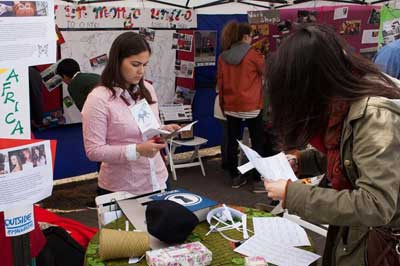
1400 young people at the Loppiano Meeting
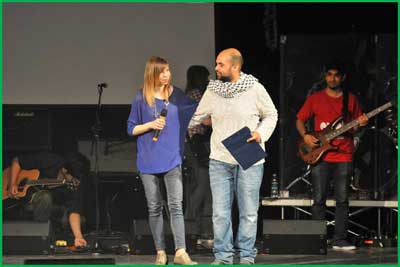 “During these hours in which we are literally bombarded with violence, war, and indifference, we wish to powerfully testify that there is another way, because there is!” This was the introduction that came from the stage of the Auditorium of Loppiano, Italy where Nino, Nahomi, Luigi and Anna had held a two hour long discussion with 1,400 young people. The 42cnd Meeting of young Italians of the Focolare was held on the 1st of May in the permanent Mariapolis of Loppiano, Italy. This year’s title was: OUTSIDE, Look, Choose, Be.” Many proposals were presented by the Young For A United World in support of a culture of fraternity, as a way of emerging from personal and social inertia and bring change to the world. Their “Fragments of Unity” Expo highlighted solidarity and social involvement, through a network of organisations which the young people run. One powerful testimony: “My name is Kareem. I’m Palestinian. I’m 23 years old with a degree in Administration. After the fall of Arafat’s government things began to be difficult for us Christians on the Garza Strip. At that time there were around 2000 of us out of a population of one and a half million. Then our numbers dwindled. Two churches were bombed. The war began in 2008. One day, a bomb exploded near me, and I was thrown to the ground. So much destruction, so many dead! I first tried to go to my father at the United Nations office because it seemed a safe place, but it wasn’t possible. It took me four hours to reach my home, having to walk over many dead bodies. My mother was in tears, because she hadn’t heard from me. We lived through 28 days of that constant tension. Then we managed to leave the Garza Strip and get into Jordan. With the people from the Focolare, experiencing such a life of fraternity, I was little by little able to overcome the powerful trauma and to believe that with love we could build a world of peace. I’ve been in Loppiano for seven months. Living with young people from so many different cultures, religions and experiences is something new for me, because we didn’t have any outside contacts in Gaza. But now, as I try to open myself and be accepting of others, I feel at home; I’ve discovered the treasure I’ve been searching for.”
“During these hours in which we are literally bombarded with violence, war, and indifference, we wish to powerfully testify that there is another way, because there is!” This was the introduction that came from the stage of the Auditorium of Loppiano, Italy where Nino, Nahomi, Luigi and Anna had held a two hour long discussion with 1,400 young people. The 42cnd Meeting of young Italians of the Focolare was held on the 1st of May in the permanent Mariapolis of Loppiano, Italy. This year’s title was: OUTSIDE, Look, Choose, Be.” Many proposals were presented by the Young For A United World in support of a culture of fraternity, as a way of emerging from personal and social inertia and bring change to the world. Their “Fragments of Unity” Expo highlighted solidarity and social involvement, through a network of organisations which the young people run. One powerful testimony: “My name is Kareem. I’m Palestinian. I’m 23 years old with a degree in Administration. After the fall of Arafat’s government things began to be difficult for us Christians on the Garza Strip. At that time there were around 2000 of us out of a population of one and a half million. Then our numbers dwindled. Two churches were bombed. The war began in 2008. One day, a bomb exploded near me, and I was thrown to the ground. So much destruction, so many dead! I first tried to go to my father at the United Nations office because it seemed a safe place, but it wasn’t possible. It took me four hours to reach my home, having to walk over many dead bodies. My mother was in tears, because she hadn’t heard from me. We lived through 28 days of that constant tension. Then we managed to leave the Garza Strip and get into Jordan. With the people from the Focolare, experiencing such a life of fraternity, I was little by little able to overcome the powerful trauma and to believe that with love we could build a world of peace. I’ve been in Loppiano for seven months. Living with young people from so many different cultures, religions and experiences is something new for me, because we didn’t have any outside contacts in Gaza. But now, as I try to open myself and be accepting of others, I feel at home; I’ve discovered the treasure I’ve been searching for.”  “After the 2010 earthquake in Haiti which caused the death of more than 220 thousand people, thousands of Haitians migrated to Brazil,” says Joao from Florianopolis, in south Brazil. “Many of them have university degrees but, since they don’t speak Portuguese, they are only able to find work as bricklayers, and are often paid very little and treated with scorn. We asked ourselves what could be done. We began by gathering clothing and foodstuffs. We felt a bit awkward, because they only spoke French and Creole, and we were unfamiliar with their culture. But our strong desire to practice the Gospel sentence: “I was a stranger and you welcomed me,” overcame all the obstacles. Little by little we got to know them and also their problems. The first was language. We began offering them Portuguese lessons with slides and music. Then we helped them to obtain their documents and enrol in free technical training courses that are offered by the government, so that they could find employment and a better life. We held cultural nights, with food, song and dance from their country. We went to the seashore and played football together. . . We have begun to build an association to take advantage of all the possible opportunities offered by institutions in favour of their full insertion into local society. Not everything has been worked out and we still have a lot of work ahead of us, but it seems that a seed of fraternity has been planted.” This has been a glimpse of the 2015 Meeting, rich with testimonies and many concrete proposals for responding to the urgent needs of many people. Meanwhile, a network of young people, associations, and organisations has already been very active for several years in Italy, operating at many levels of the social fabric, in what Pope Francis has called the existential peripheries: “We want to bring into the light this undergrowth of solidarity that is building a present and future of peace, but is not well enough known,” the young people from the Focolare explain.
“After the 2010 earthquake in Haiti which caused the death of more than 220 thousand people, thousands of Haitians migrated to Brazil,” says Joao from Florianopolis, in south Brazil. “Many of them have university degrees but, since they don’t speak Portuguese, they are only able to find work as bricklayers, and are often paid very little and treated with scorn. We asked ourselves what could be done. We began by gathering clothing and foodstuffs. We felt a bit awkward, because they only spoke French and Creole, and we were unfamiliar with their culture. But our strong desire to practice the Gospel sentence: “I was a stranger and you welcomed me,” overcame all the obstacles. Little by little we got to know them and also their problems. The first was language. We began offering them Portuguese lessons with slides and music. Then we helped them to obtain their documents and enrol in free technical training courses that are offered by the government, so that they could find employment and a better life. We held cultural nights, with food, song and dance from their country. We went to the seashore and played football together. . . We have begun to build an association to take advantage of all the possible opportunities offered by institutions in favour of their full insertion into local society. Not everything has been worked out and we still have a lot of work ahead of us, but it seems that a seed of fraternity has been planted.” This has been a glimpse of the 2015 Meeting, rich with testimonies and many concrete proposals for responding to the urgent needs of many people. Meanwhile, a network of young people, associations, and organisations has already been very active for several years in Italy, operating at many levels of the social fabric, in what Pope Francis has called the existential peripheries: “We want to bring into the light this undergrowth of solidarity that is building a present and future of peace, but is not well enough known,” the young people from the Focolare explain.
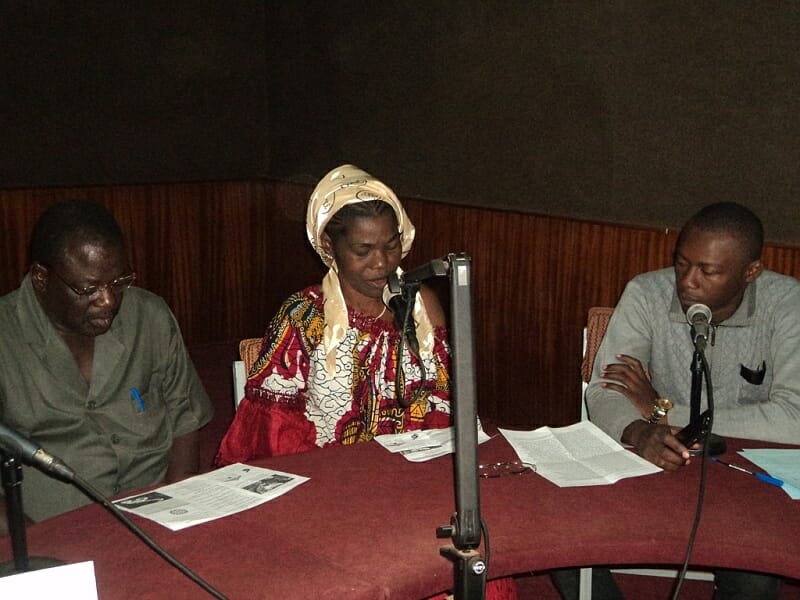
Sensitivity to Healthcare? We’re trying our hand.
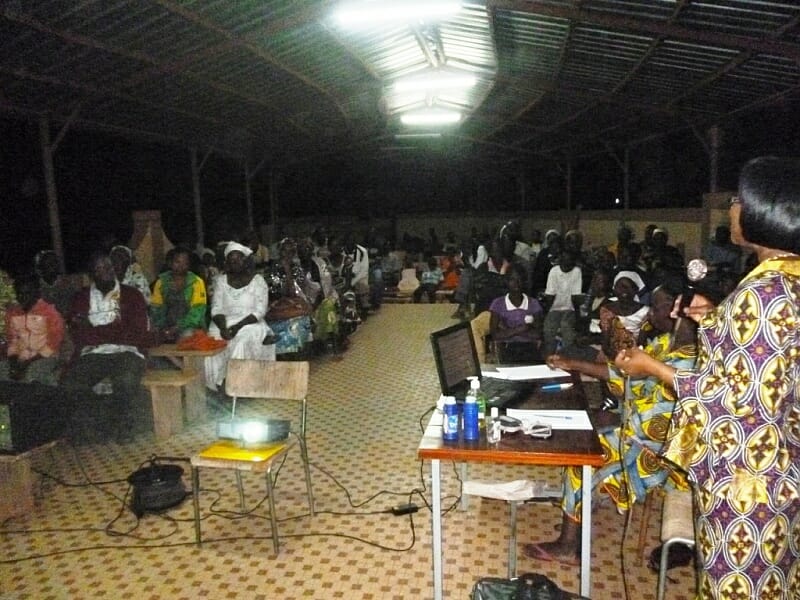 Bobo Dioulasso is the second city of Burkina Faso, the closest to Bamako, capital of Mali, where some cases of Ebola had been detected. There is a dynamic social and economic relationship between the two cities, with a continual movement of people and merchandise. “We need to act urgently to reduce at best the risk of the virus reaching also Burkina – wrote the Ebola awareness team of the Focolare Movement in Bobo Dioulasso. We practically had to inform as many people as possible on the preventive measures, but the political situation in the country is such that government interventions are not always possible.” “So we decided to act on our own. Félicité is a volunteer epidemiological doctor at the Healthcare Organisation for West Africa (OOAS). Her specific role is to train the healthcare practitioners in fighting epidemic outbreaks, since she herself has worked in countries like Guinea Conakry, Liberia, and Sierra Leone. Félicité immediately offered her services.”
Bobo Dioulasso is the second city of Burkina Faso, the closest to Bamako, capital of Mali, where some cases of Ebola had been detected. There is a dynamic social and economic relationship between the two cities, with a continual movement of people and merchandise. “We need to act urgently to reduce at best the risk of the virus reaching also Burkina – wrote the Ebola awareness team of the Focolare Movement in Bobo Dioulasso. We practically had to inform as many people as possible on the preventive measures, but the political situation in the country is such that government interventions are not always possible.” “So we decided to act on our own. Félicité is a volunteer epidemiological doctor at the Healthcare Organisation for West Africa (OOAS). Her specific role is to train the healthcare practitioners in fighting epidemic outbreaks, since she herself has worked in countries like Guinea Conakry, Liberia, and Sierra Leone. Félicité immediately offered her services.” 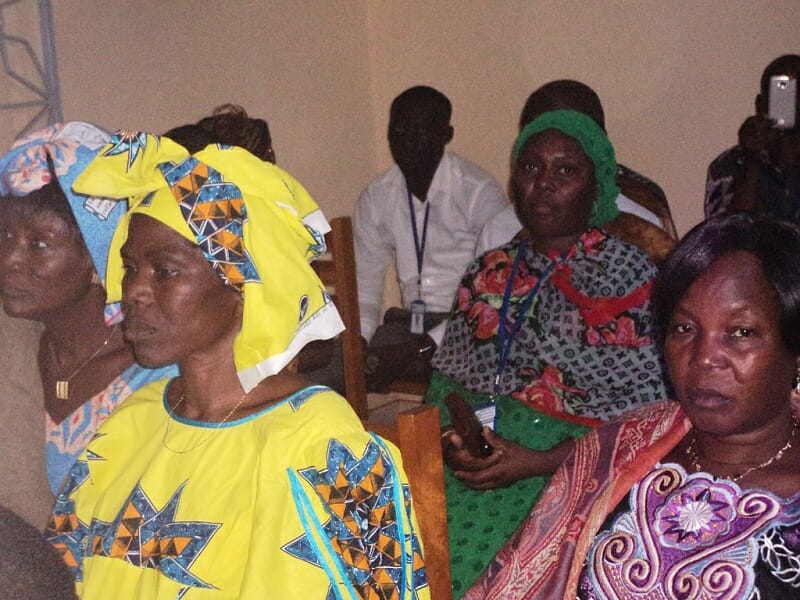 “The first thing we thought of doing was to notify the Bishop who was not in town at that time. We then went to speak to the Vicar Genera”l, Abbé Sylvestre, who assured us of the full support of the diocese, and in exhorting the clergy and faithful about the necessary precautionary measures to take. Carlo, a focolarino doctor of the dispensary of Mariapolis Victoria (Man) of the Ivory Coast, sent us some audiovisuals which we copied for the various youth and adult groups that would work for the awareness campaign. We also sent this material to a priest and a teacher in two other cities (Dedougou and Toussiana), interested in our campaign. Félicité took charge of forming groups, with the help of 15 students of the western countries of Africa sent by the OOAS, some of whom are Muslims.” “The campaign started in November 2014, but before that was already taken up during the meetings of the Focolare Movement. Campaigning was done in parishes in order to expand towards the various districts, and during a big youth meet organised by the diocese of Bobo Dioulasso itself. On Sundays we went to speak also in the churches. We spoke in a private radio broadcast, and in those of the national and also diocesan radios, in the three languages spoken: French, Dioula and Moré.”
“The first thing we thought of doing was to notify the Bishop who was not in town at that time. We then went to speak to the Vicar Genera”l, Abbé Sylvestre, who assured us of the full support of the diocese, and in exhorting the clergy and faithful about the necessary precautionary measures to take. Carlo, a focolarino doctor of the dispensary of Mariapolis Victoria (Man) of the Ivory Coast, sent us some audiovisuals which we copied for the various youth and adult groups that would work for the awareness campaign. We also sent this material to a priest and a teacher in two other cities (Dedougou and Toussiana), interested in our campaign. Félicité took charge of forming groups, with the help of 15 students of the western countries of Africa sent by the OOAS, some of whom are Muslims.” “The campaign started in November 2014, but before that was already taken up during the meetings of the Focolare Movement. Campaigning was done in parishes in order to expand towards the various districts, and during a big youth meet organised by the diocese of Bobo Dioulasso itself. On Sundays we went to speak also in the churches. We spoke in a private radio broadcast, and in those of the national and also diocesan radios, in the three languages spoken: French, Dioula and Moré.”  “This campaign gave us the opportunity to meet many people. When Jean-Bernard explained to his neighbours what he wanted to do in the district, everyone offered help: some attended to the amplifiers, some invited a singer to entertain, another took care of the transport of the material and others brought water to drink. At the presentation there were about 200 people. Word spread also to the neighbouring districts and Jean-Bernard had to repeat the program several times. In one of these occasions, a professional nurse offered to answer the questions of the audience. In another meeting, an expert of local tongues came and was an excellent translator. The officers of the Town Hall, who had given the permit for these meetings, expressed their gratitude for all this.» “In the meantime, we heard from Mali that the disease had been overcome. So the risk had been drastically reduced. The important thing now is to continue to comply with the preventive measures. It was a great opportunity to learn to work together for our people. We must continue.”
“This campaign gave us the opportunity to meet many people. When Jean-Bernard explained to his neighbours what he wanted to do in the district, everyone offered help: some attended to the amplifiers, some invited a singer to entertain, another took care of the transport of the material and others brought water to drink. At the presentation there were about 200 people. Word spread also to the neighbouring districts and Jean-Bernard had to repeat the program several times. In one of these occasions, a professional nurse offered to answer the questions of the audience. In another meeting, an expert of local tongues came and was an excellent translator. The officers of the Town Hall, who had given the permit for these meetings, expressed their gratitude for all this.» “In the meantime, we heard from Mali that the disease had been overcome. So the risk had been drastically reduced. The important thing now is to continue to comply with the preventive measures. It was a great opportunity to learn to work together for our people. We must continue.”
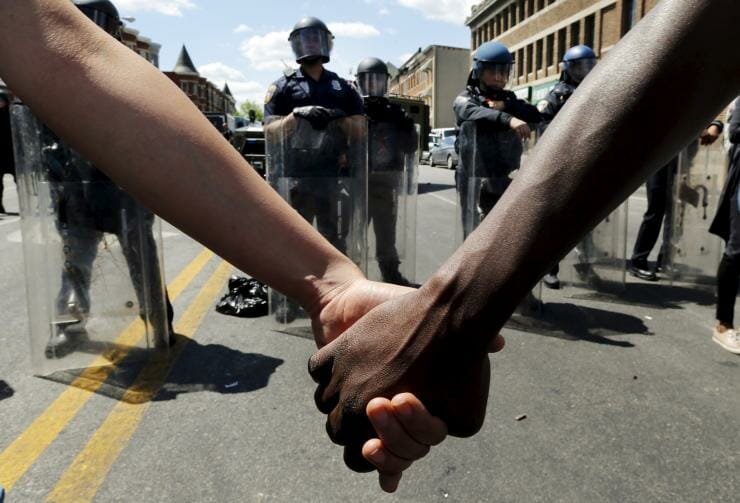
Baltimore, the day after
 “The events that came about have stirred up the support of the citizens. Many leaders, religious groups and civil organisations decided to work together to clean the streets and buildings and to help in various ways, revealing the positive side of the city, though deeply offended,» Lucia, Co-Director of the Focolare Movement wrote from Washington. We all know about the people’s protests triggered in Baltimore last month, which are still ongoing, after the death of the 25-year-old Afro-American Freddie Gray while he was under arrest. Baltimore, the biggest city of Maryland with more than 600,000 inhabitants is a melting pot of ethnic groups, especially Afro-Americans. Leonie and Jennifer, two volunteers of the Focolare, live in the city centre. “The situation is still very tense, and yesterday the mayor closed the schools and the governor of the state deployed the armed forces. However, all those we know are fine.” Leonie lives close to the place of the clashes and teaches in a primary school of almost all Afro students and where there is great poverty. “On TV I saw one of my third-year elementary students participate in the sacking of buildings and properties.” “We cannot remain indifferent; we want to do something concrete, though aware that our contribution to establish true relationships between people is urgent, more than ever. Furthermore, every act of love builds new relationships that help foster fraternity between people,” wrote Marilena and Mike. “In the meantime we participate in the various moments of prayer organised by the religious authorities, starting from the Mass that Archbishop Lori will celebrate in our district, to invoke peace.” “I returned to school today,” Leonie recounts, “and tried to see my students (those who participated in the plunders) with ‘new eyes’.I contacted an Afro-American Muslim teacher who knows two black religious representatives in the school to offer our solidarity, and we agreed to work together.” Jennifer works in a company where almost all are whites. «A colleague of mine who lives close to the place where violence broke out, came to visit me today, and told me of her suffering in seeing all these events, but did not have the courage to mention it to anyone for fear of being marginalised by her colleagues. It was the occasion to tell her that we can start from ourselves and build a dialogue with all, one at a time, and in this way spread a new mentality. My colleague is not a practicing believer, but her face lit up and she told me that this is precisely what she also wants to do.” Meanwhile, the leaders of the various religious communities have started to work together for peace. “I was invited by the Imam Talib of the mosque of Washington, to give my testimony on the the 5th of May as a focolarina and the ideal that inspires us,” Lucia continued. “He wanted me to speak in a meeting open to the public, something they had organised with the District Procurator, to integrate the religious perspective as an essential dimension to subdue the violence. The event was entitled: Heal the Hurt, Heal the Heart. It seemed to be a great possibility for dialogue between religions but also an opportunity to show, more than the clashing, the richness of our society’s ethnic diversities.”
“The events that came about have stirred up the support of the citizens. Many leaders, religious groups and civil organisations decided to work together to clean the streets and buildings and to help in various ways, revealing the positive side of the city, though deeply offended,» Lucia, Co-Director of the Focolare Movement wrote from Washington. We all know about the people’s protests triggered in Baltimore last month, which are still ongoing, after the death of the 25-year-old Afro-American Freddie Gray while he was under arrest. Baltimore, the biggest city of Maryland with more than 600,000 inhabitants is a melting pot of ethnic groups, especially Afro-Americans. Leonie and Jennifer, two volunteers of the Focolare, live in the city centre. “The situation is still very tense, and yesterday the mayor closed the schools and the governor of the state deployed the armed forces. However, all those we know are fine.” Leonie lives close to the place of the clashes and teaches in a primary school of almost all Afro students and where there is great poverty. “On TV I saw one of my third-year elementary students participate in the sacking of buildings and properties.” “We cannot remain indifferent; we want to do something concrete, though aware that our contribution to establish true relationships between people is urgent, more than ever. Furthermore, every act of love builds new relationships that help foster fraternity between people,” wrote Marilena and Mike. “In the meantime we participate in the various moments of prayer organised by the religious authorities, starting from the Mass that Archbishop Lori will celebrate in our district, to invoke peace.” “I returned to school today,” Leonie recounts, “and tried to see my students (those who participated in the plunders) with ‘new eyes’.I contacted an Afro-American Muslim teacher who knows two black religious representatives in the school to offer our solidarity, and we agreed to work together.” Jennifer works in a company where almost all are whites. «A colleague of mine who lives close to the place where violence broke out, came to visit me today, and told me of her suffering in seeing all these events, but did not have the courage to mention it to anyone for fear of being marginalised by her colleagues. It was the occasion to tell her that we can start from ourselves and build a dialogue with all, one at a time, and in this way spread a new mentality. My colleague is not a practicing believer, but her face lit up and she told me that this is precisely what she also wants to do.” Meanwhile, the leaders of the various religious communities have started to work together for peace. “I was invited by the Imam Talib of the mosque of Washington, to give my testimony on the the 5th of May as a focolarina and the ideal that inspires us,” Lucia continued. “He wanted me to speak in a meeting open to the public, something they had organised with the District Procurator, to integrate the religious perspective as an essential dimension to subdue the violence. The event was entitled: Heal the Hurt, Heal the Heart. It seemed to be a great possibility for dialogue between religions but also an opportunity to show, more than the clashing, the richness of our society’s ethnic diversities.”
